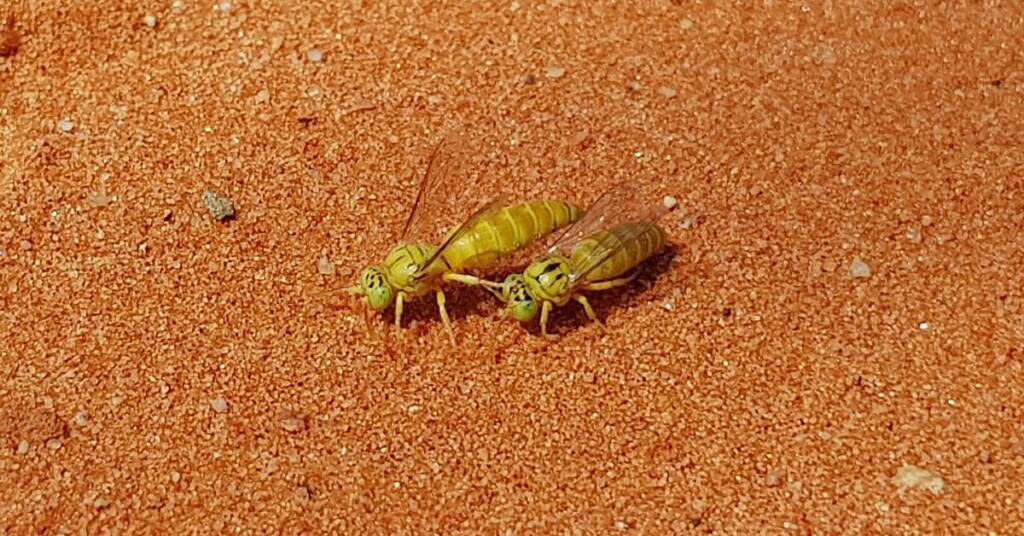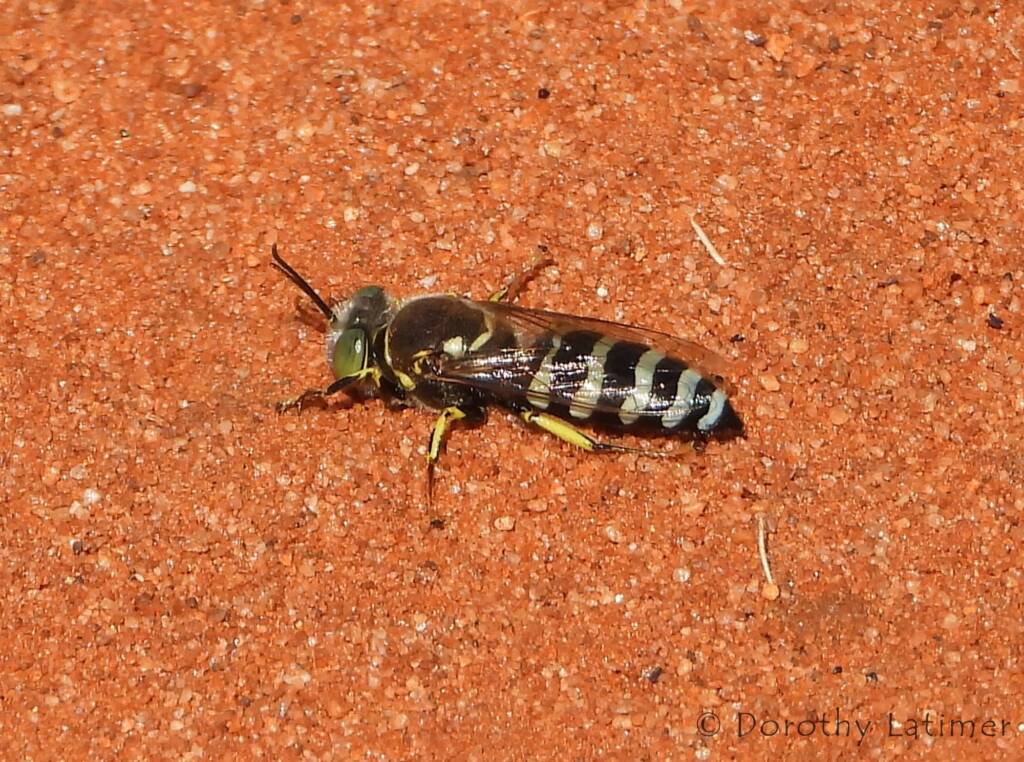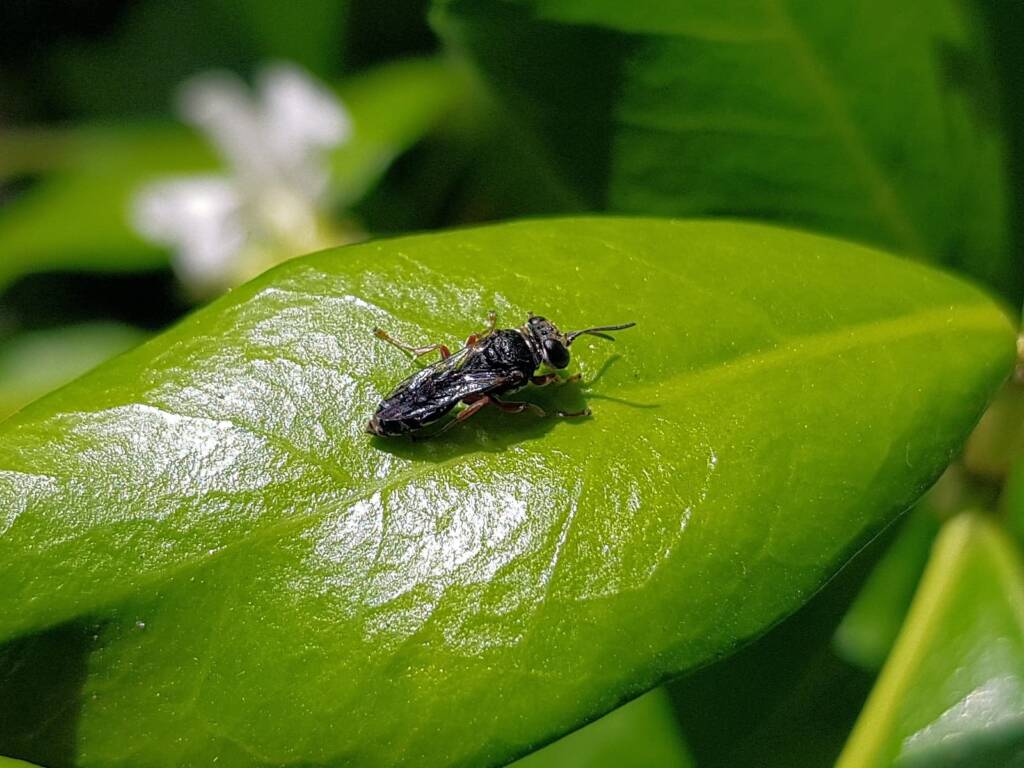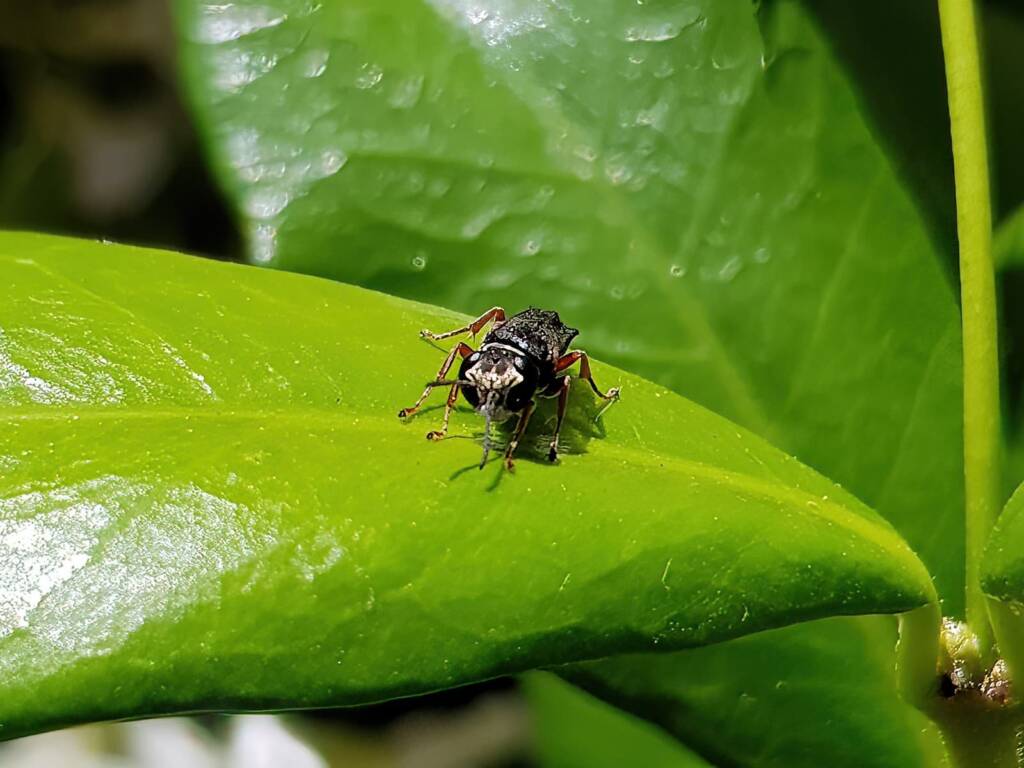CrabronidaePison
The family Crabronidae are a large paraphyletic group (nominally a family) of wasps.
A paraphyletic group is a group of any size and systematic rank that originated from a single common ancestor, but does not – as opposed to a monophyletic group – contain all descendants from this ancestor. The ancestral species of this group is thus also the ancestor of one or more other groups.2
Source: Sturmbauer, C.. (2013). Paraphyly. 10.1016/B978-0-12-374984-0.01119-0.

Collectively, the family Crabronidae include well over 200 genera, containing in excess of over 9,000 species.
This is a relatively new family that was created from dividing the Sphecidae sensu lato of previous authors (e.g. Bohart & Menke 1976; Naumann 1991) into two families, Sphecidae sensu stricto and Crabronidae, on phylogenetic grounds (see Melo 1999). It comprises all of the subfamilies previously contained within Sphecidae s.l. except for Sphecinae (now Sphecidae s.str.) and Ampulicicinae (now a separate family Ampulicidae) (see Systematics). The family comprises the majority of species previously in Sphecidae s.l. with about 430 species described for Australia, and 18 for New Zealand.3
Source: What wasp is that? An interactive guide to the Australasian families of Hymenoptera

Crabronids can be recognised by the lack of a petiole between the mesosoma and metasoma or, if a petiole is present, then it is short or composed of tergal and sternal components and the basal jugal lobe of the hind wing is small (see Morphology). Of the nine subfamilies, five are represented in Australasia; Crabroninae, Larrinae, Nyssoninae, Pemphredoninae and Philanthinae, and these can be identified using Bohart and Menke (1976) and Naumann (1991). Some crabronids can be mistaken for bees, but they lack the plumose hairs.3
Source: What wasp is that? An interactive guide to the Australasian families of Hymenoptera

The family Crabronidae is sometimes referred to as Crabronid Wasps or Crabronids and sometimes as Sand Diggers.
Crabronids were originally a part of the Sphecidae, but the latter name is now restricted to a separate family based on what was once the subfamily Sphecinae. Several of the subfamilies of the Crabronidae are often treated as families in their own right, as is true of the most recent phylogenies.5
Source: Crabronidae, Wikipedia

The scientific classification shown here is from the Atlas of Living Australia. Information provided is likely to have changed, as more scientific research is published. Check the footnote/reference source Atlas of Living Australia below1.
This page is a work in progress…
- Scientific classification
- Kingdom: Animalia
- Phylum: Arthropoda
- Subphylum: Hexapoda
- Class: Insecta
- Informal: Pterygotes
- Order: Hymenoptera
- Superfamily: Apoidea
- Informal: Spheciformes
- Family: Crabronidae
- Subfamily:
- Bembicinae
- Crabroninae
- Pemphredoninae
- Philanthinae
Footnote & References
- Crabronidae, Atlas of Living Australia, https://bie.ala.org.au/species/https://biodiversity.org.au/afd/taxa/29370dce-4e02-4efe-af79-1b2a13dd9601
- Paraphyly, Sturmbauer, C.. (2013). Paraphyly. 10.1016/B978-0-12-374984-0.01119-0., ResearchGate, https://www.researchgate.net/publication/323815489_Paraphyly
- What wasp is that? An interactive guide to the Australasian families of Hymenoptera, authors Nicholas B. Stevens / Claire J. Stephens / Muhammad Iqbal / John T. Jennings / John LaSalle / Andy D.Austin, Lucidcentral, https://keys.lucidcentral.org/keys/v3/what_wasp_is_that/key/What%20wasp%20is%20that/Media/Html/Hymenoptera%20key/FrontPage.htm
- Square-headed Wasps, Sand Wasps, and Allies (Family Crabronidae), iNaturalistAU, https://inaturalist.ala.org.au/taxa/51955-Crabronidae
- Crabronidae, Wikipedia, https://en.wikipedia.org/wiki/Crabronidae
CrabronidaePison
InsectsBees Beetles Blattodea Butterflies Coleoptera Cicada Crabronidae Diptera Dragonflies & Damselflies Formicidae Hemiptera Heteroptera (True Bugs) Mango Planthopper Moths Orthoptera Orthopteroid Processionary Caterpillar Stink Bugs, Shield Bugs and Allies Syrphidae Wasps Water Scorpion (Laccotrephes tristis) Witchetty Grub
